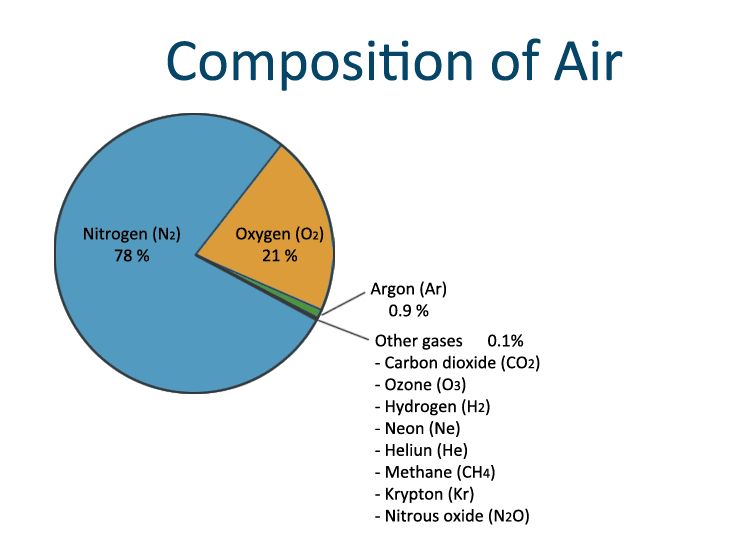
Composition of Air for Kids What is Air Made of? Ency123
The below diagram gives an idea about the main components of air. Composition of Air Diagram The composition of air varies from place to place. For example, the air is thinner on mountains as compared to plains. This is the reason why mountaineers always carry oxygen cylinders with them.

How can we Obtain different Gases from Air? Chemistry Teachoo
The composition of air consists of three key components of air, namely Nitrogen (78%), Oxygen (21%), Argon (1%), Carbon-di-oxide (0.03%) and water vapor. Air also has some other gases but they are in very minute percentage.
Composition of air Labelled diagram
Air - Composition and Molecular Weight sea level and at standard gravity ( O - 0.5 parts/million (ppm) - 0 to 0.07 parts/million (ppm) - 0.02 parts/million (ppm) - 0.01 parts/million (ppm) CO - 0 to trace (ppm) - 0 to trace (ppm) 76 Centimeters (760 mm) of Mercury 29.921 Inches of Mercury 10.332 Meters of Water 406.78 Inches of Water
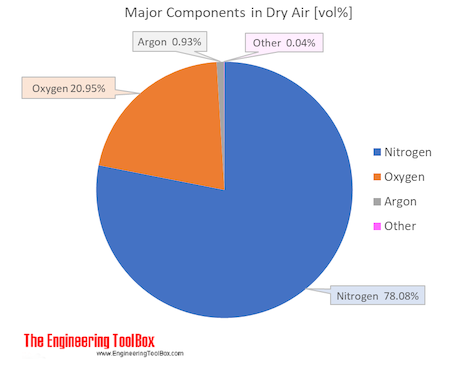
Air Composition
The three major constituents of Earth's atmosphere are nitrogen, oxygen, and argon. Water vapor accounts for roughly 0.25% of the atmosphere by mass.

Composition of Air Oxygen, Carbon Dioxide, Nitrogen, Argon & Water vapor Chemistry Aakash
Air constitutes of various gasses like oxygen, nitrogen, carbon dioxide and dust particles. All these grasses retain their physical and chemical properties in the air. Therefore, the air is called a mixture. Percentages composition of different gases are given below: Nitrogen - 78% Oxygen - 21% Argon - 0.9%

Structure of Atmosphere (Important for UGC NET, UPSC CSE, SSC) FlexiPrep
Chemistry Is Matter Around Us Pure? Components Of Air Introduction to the Components of Air The mixture of gases that makes up the Earth's atmosphere is known as air. Nitrogen makes up 78 % of this gas, which is mixed with oxygen (21%), water vapour (variable), argon (0.9 %), carbon dioxide (0.04%), and trace gases.

Composition of air vector illustration Matter science, Life science, Composition
It consists of 78% nitrogen, 21% oxygen and 1 % other gases and water vapour. The composition of air does not change as you travel through the layers of the atmosphere. What changes is the number of molecules. The air molecules decrease and become less. The moisture content varies from place to place.

Atmosphere Composition and Structure PCSSTUDIES Geography
What is atmosphere? Composition of the atmosphere Gases of the atmosphere Carbon dioxide: Ozone gas: Water Vapour Dust Particles Structure of the atmosphere Troposphere Stratosphere Mesosphere Thermosphere Exosphere What is atmosphere? We all know that earth is a unique planet due to the presence of life.
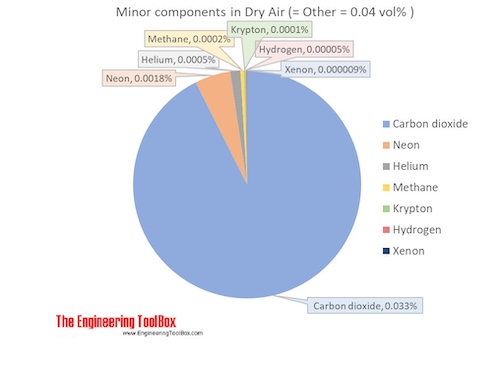
Air Composition and Molecular Weight
A fan moves air.. Air is the Earth's atmosphere.Air is a mixture of many gases and tiny dust particles. It is the clear gas in which living things live and breathe.It has an indefinite shape and volume.It has mass and weight, because it is matter.The weight of air creates atmospheric pressure.There is no air in outer space.. Atmosphere is a mixture of about 78% nitrogen, 21% of oxygen, and 1%.
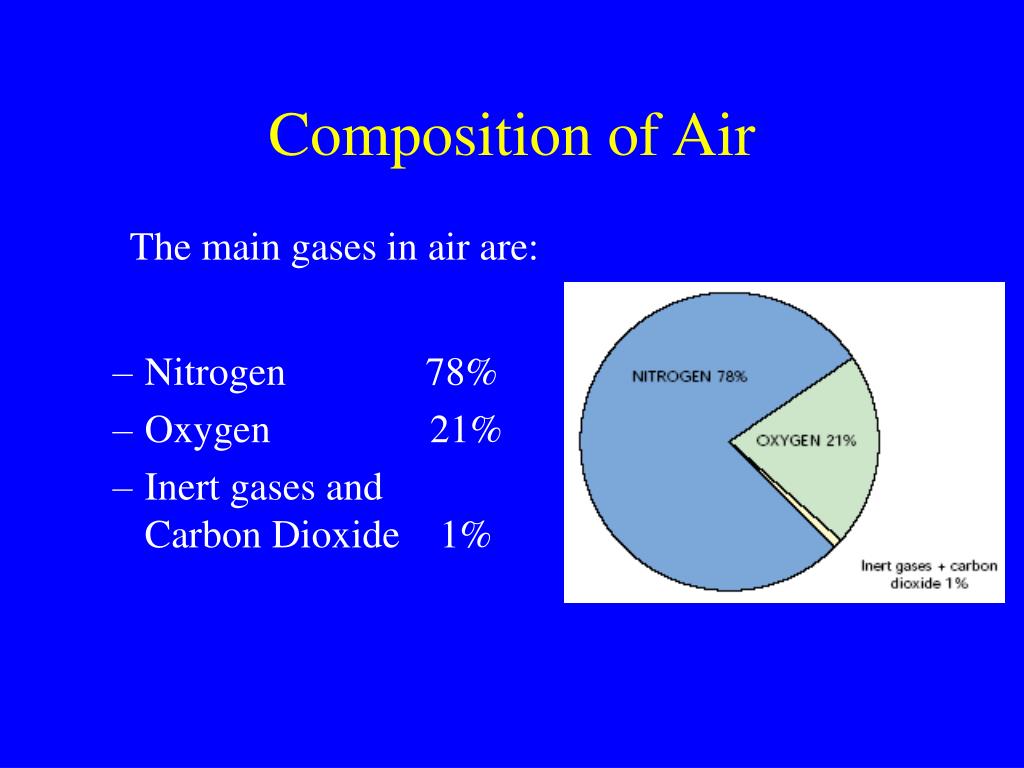
PPT Air PowerPoint Presentation, free download ID3933849
In addition to the equation of state for standard air, a mixture model explicit in Helmholtz energy has been developed which is capable of calculating the thermodynamic properties of mixtures containing nitrogen, argon, and oxygen.
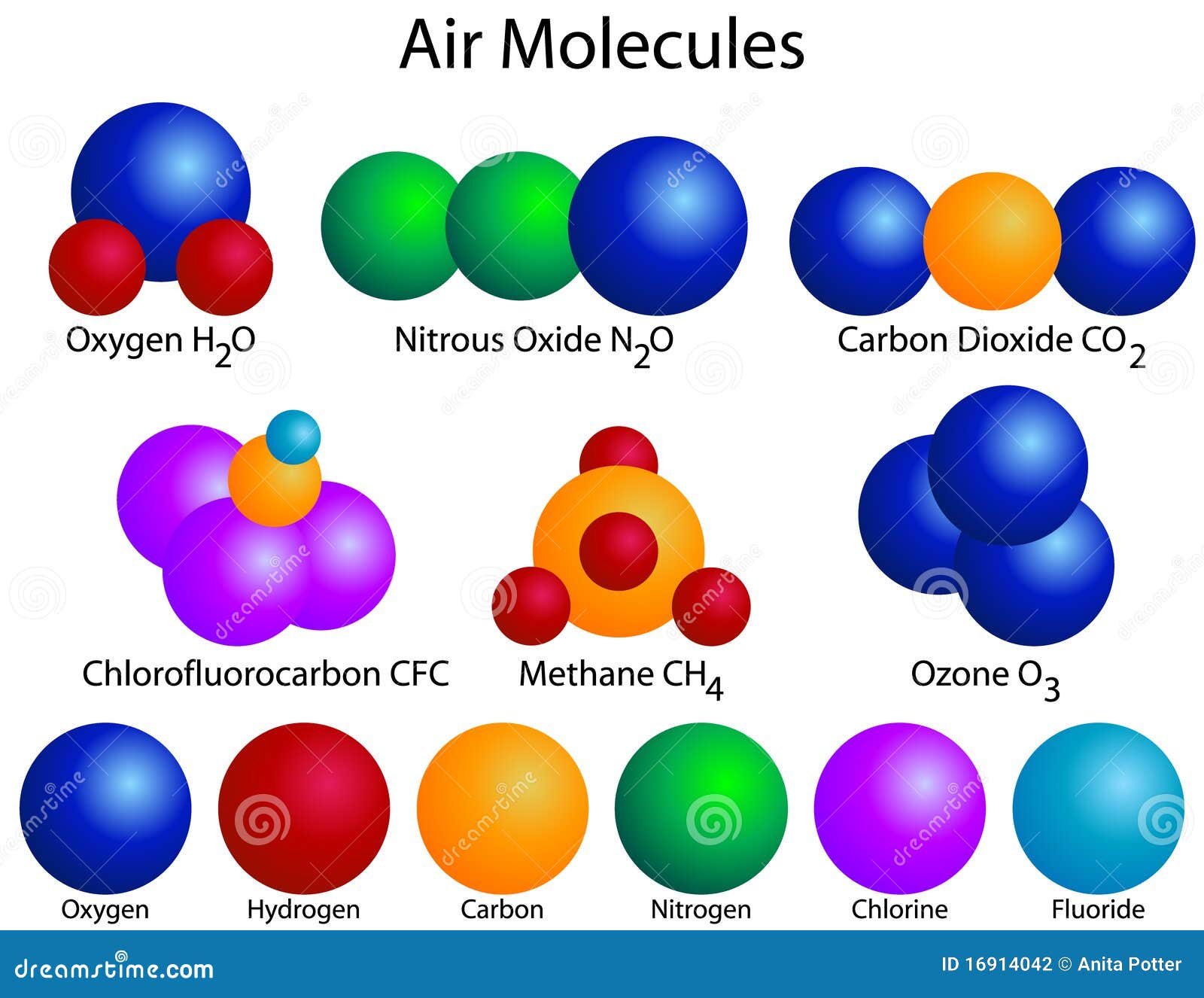
Molecular Structure of Air Molecules Stock Vector Illustration of chart, guide 16914042
Air also contains a significant amount of human-made air pollutants, including some that are not safe to breathe and some that warm our planet's climate. The troposphere also contains water in all three phases (liquid, solid, and gas) as well as solid particles called aerosols. The dry composition of the atmosphere is mostly nitrogen and oxygen.

Image result for atmospheric composition Earth layers, Earth’s atmosphere, Earth atmosphere
Air has the following properties: Air takes up volume. Air takes up the volume of the container it is kept in. Air has mass/weight. Take a balloon, measure its weight. Now, fill another balloon with air and measure its weight. You will note a difference in their weights. Air is affected by altitude/height. The higher we go, the lower is the air.
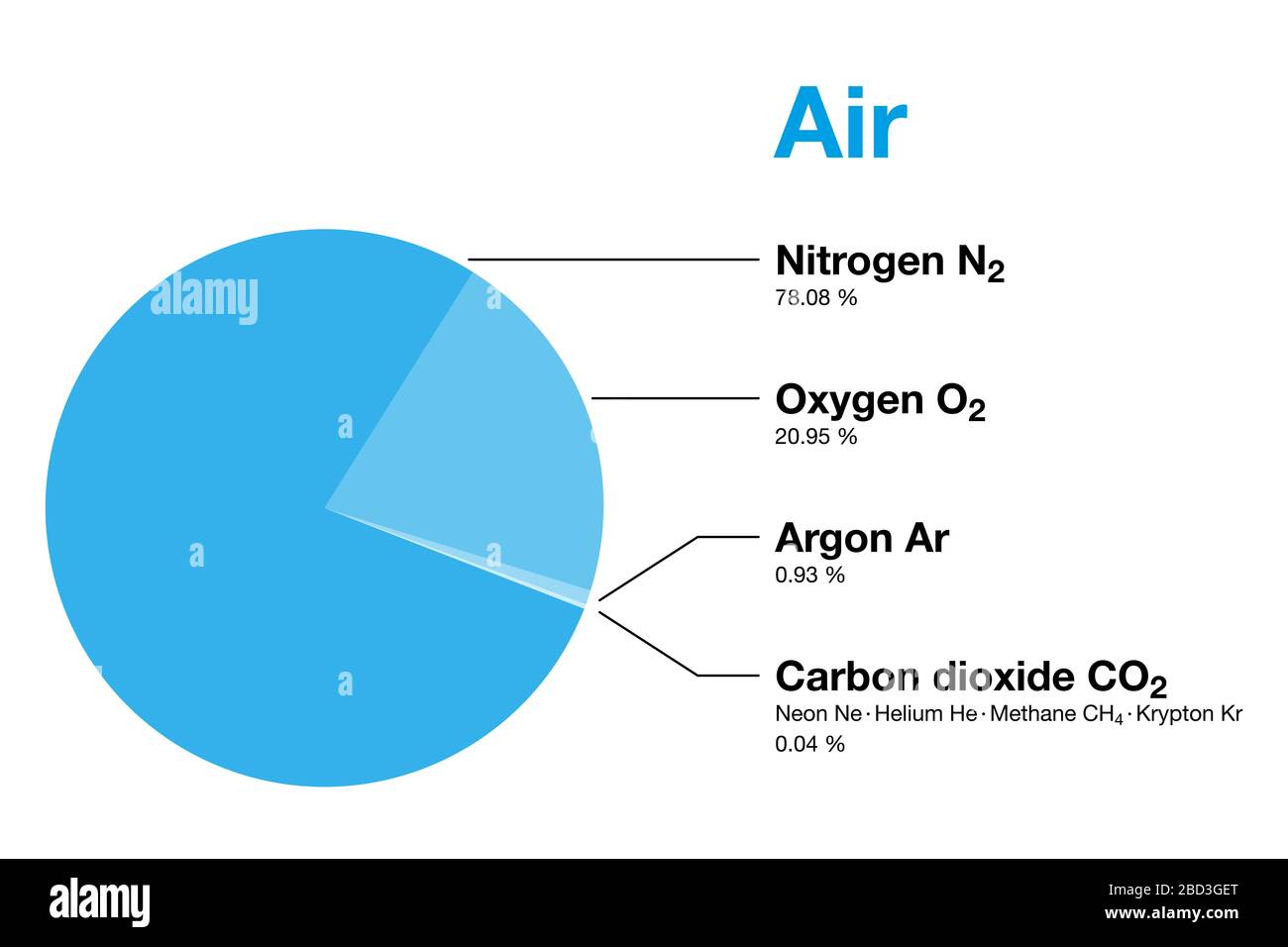
Air, composition of Earth's atmosphere by volume, excluding water vapor. Dry air contains
However, half the mass of the atmosphere lies within 5 km, and 99.99% within 80 km of the surface. The average atmospheric pressure at sea level is 1.01 x 10 5 pascals, or 1010 millibars. A 1-cm 2 cross section of the earth's surface supports a column weighing 1030 g; the total mass of the atmosphere is about 5.27 x 10 21 g.
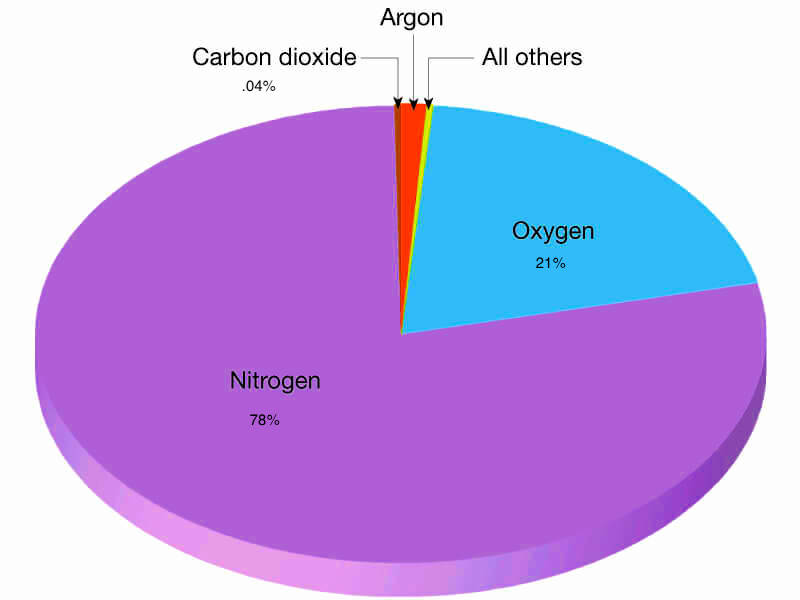
Atmosphere Composition and Basic Nutrient Cycles RajRAS
Composition of dry air by percent volume at sea level and 15°C. While the percentages of nitrogen, oxygen, and argon are fairly stable, the increasing amount of carbon dioxide in air means older tables list a lower percentage. For example, the 1996 CRC Handbook of Chemistry and Physics listed the carbon dioxide percentage as 0.0314%, while the 2019 number was 0.0497% and the 2020 number is.

Layers of the Atmosphere Characteristics HowForKids
1 Summary Why do we care about air? Breathe in, breathe out, breathe in. most, if not all, humans do this automatically. Do we really know what is in the air we breathe? In this activity, students use M&M® candies to create pie graphs that show their understanding of the composition of air.

Chemical Composition of Air
An atmosphere is made of the layers of gases surrounding a planet or other celestial body. Earth's atmosphere is composed of about 78% nitrogen, 21% oxygen, and 1% other gases. Nitrogen (N2): It is the most plentiful gas in the air. It is one of the primary nutrients critical for the survival of all living organisms.